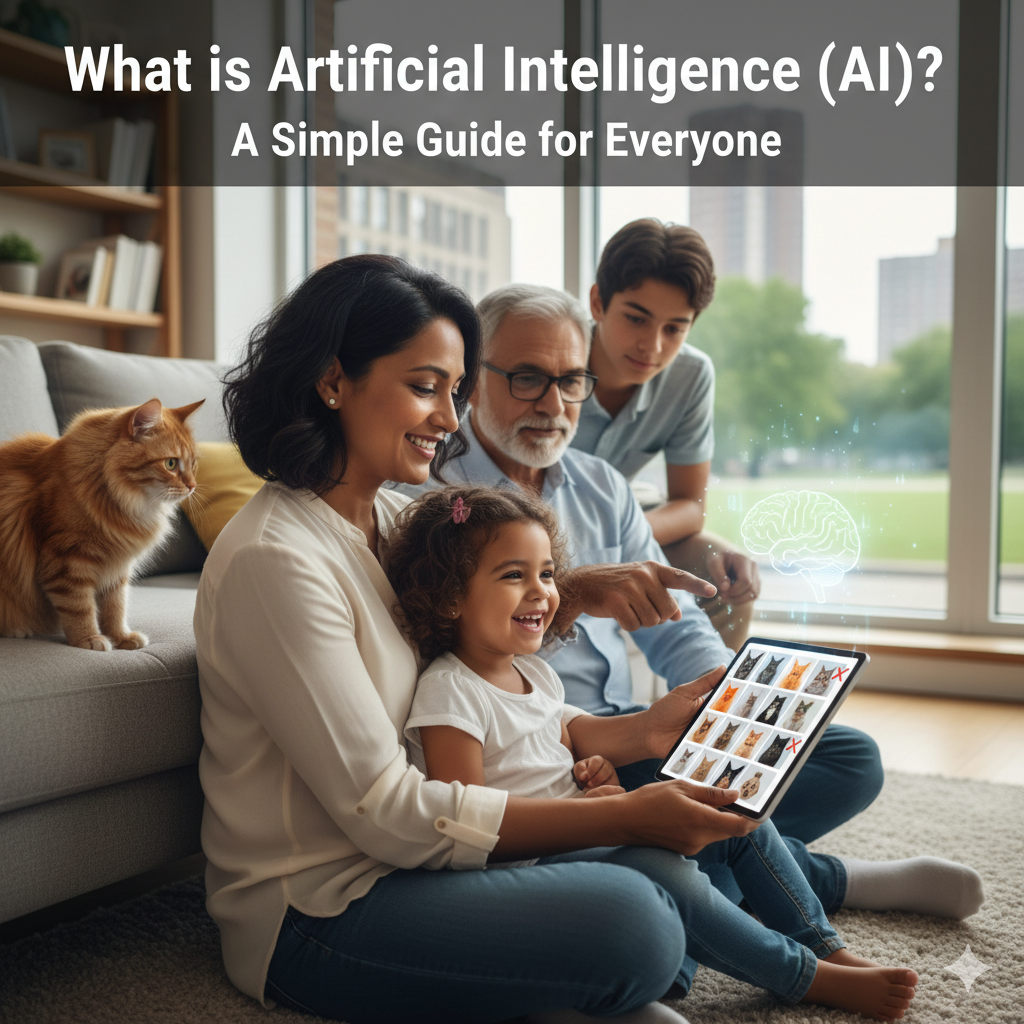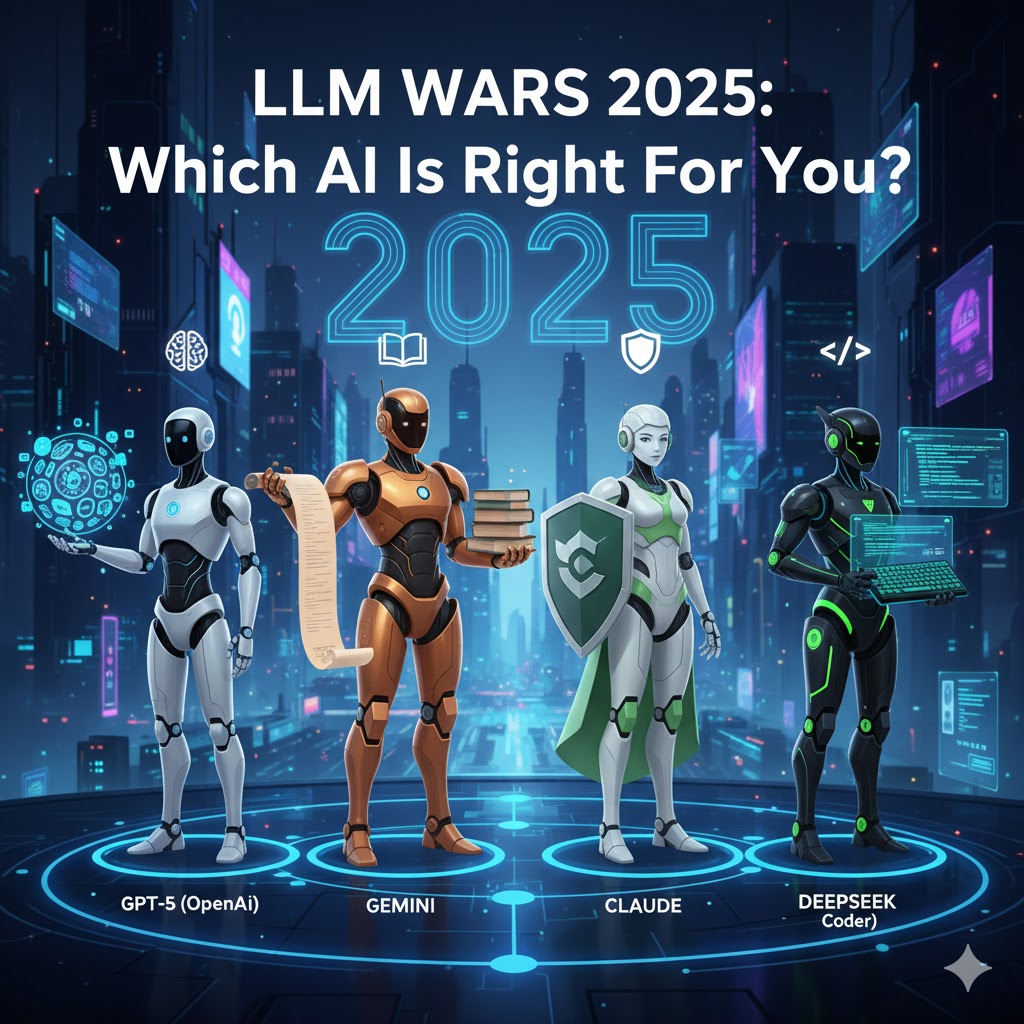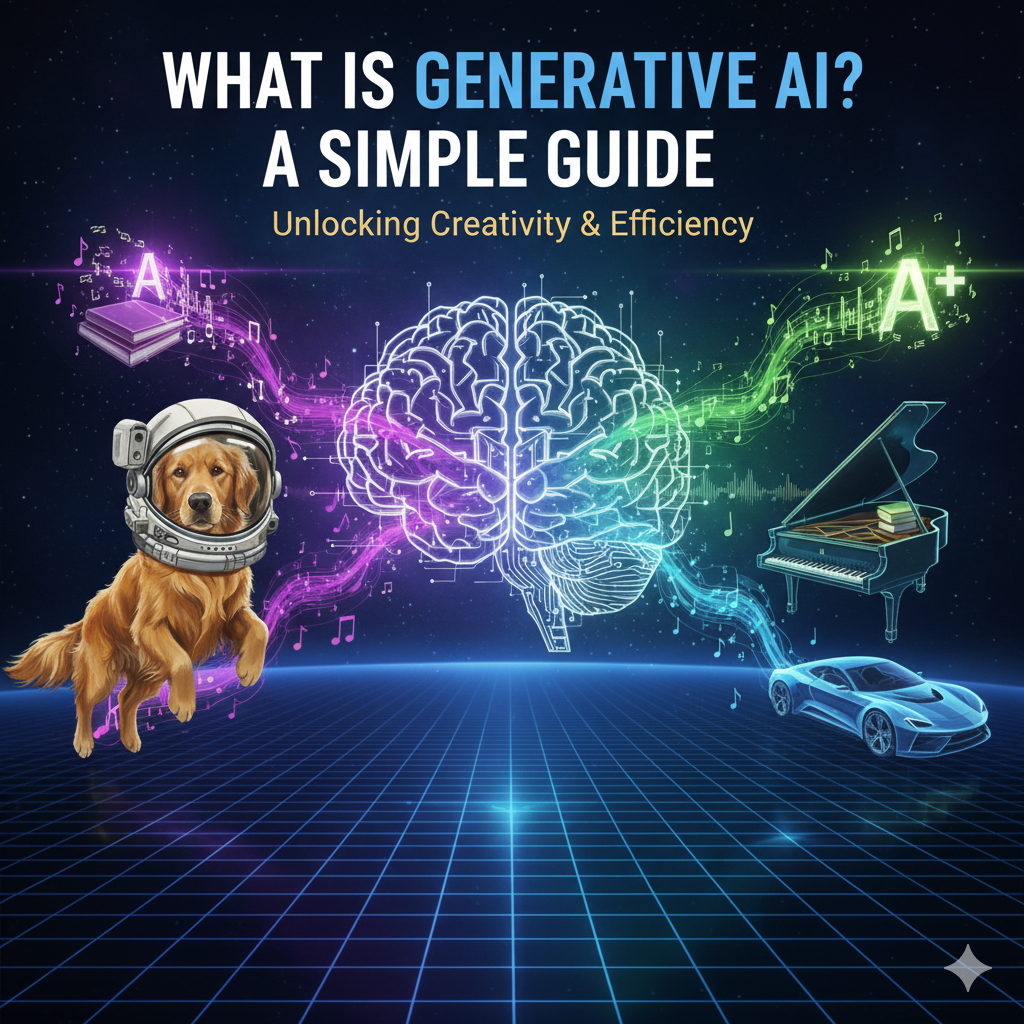Ever wondered how Netflix knows exactly what show you’ll love next, or how your phone unlocks just by seeing your face? That’s Artificial Intelligence (AI) at work! It might sound like something out of a sci-fi movie, but AI is already a huge part of our daily lives, making things smarter, faster, and easier.
But what is AI, really? And what’s the crucial difference between AI, Machine Learning, and Deep Learning?
Let’s break it down in a way that anyone can understand without any technical knowledge
What is Artificial Intelligence (AI)?
Simply AI is a broad field of computer science dedicated to making machines smart enough to mimic (Replace) human intelligence. It’s about creating systems that can:
- Understand: Process languages, voice commands, and the meaning of text.
- Learn: Improve their performance over time from experience and data.
- Reason: Make logical decisions and draw inferences based on information.
- Problem-solving: Find solutions to new and complex challenges.
- Perceive: “See” or “hear” the world through data, like in facial recognition.
Simple Analogy: Imagine you want to teach a robot to be a fantastic chess player. The ultimate goal is for the robot to “think” strategically and win games like a human grandmaster. That entire mission of making the robot “intelligent” in chess is the concept of AI.
What is Machine Learning (ML)?
So, how do we make machines intelligent? One of the most powerful and common methods today is through Machine Learning (ML).
If AI is the goal, Machine Learning is the primary way we get there. ML is a subset of AI that enables systems to learn from data and identify patterns without being explicitly programmed for every single task. Instead of a developer writing code for every possible move in a chess game, we let the machine learn by analyzing thousands of games.
The Cat Example
Imagine you’re teaching a child what a “cat” is.
- You don’t give the child a strict list of rules (“it must have two pointy ears, a tail exactly 30cm long, whiskers of 0.5mm thickness…”). That’s impossible!
- Instead, you show them examples (data):
- “This is a cat!” (pointing to a fluffy ginger cat)
- “This is also a cat!” (pointing to a sleek black cat)
- “This is NOT a cat; it’s a dog.”

After seeing hundreds of examples, the child’s brain starts to recognize the patterns and features that define a “cat.” That’s exactly how Machine Learning works!
- The “child” is the ML algorithm.
- The “examples” are the data (e.g., thousands of images labeled “cat” or “not cat”).
- The “learning” is the algorithm adjusting itself to identify patterns and make accurate predictions.
Everyday Examples of Machine Learning:
- Email Spam Filters: Your email client learns what you consider spam based on the emails you mark, automatically filtering future messages.
- Recommendation Systems: Netflix and Amazon learn from your viewing and purchase history to suggest things you’ll probably like.
- Fraud Detection: Banks use ML to learn your typical spending patterns and flag unusual transactions that could be fraudulent.
Taking it Deeper: What is Deep Learning?
Now, let’s take it one step deeper. Deep Learning (DL) is a specialized and more advanced subset of Machine Learning. It uses a structure called an artificial neural network with many layers. Think of these layers as a team of specialists, each analyzing information at a different level, much like our own brains.
The Cat Example, Advanced!
Using our cat example, a Deep Learning model works in layers:
- Layer 1 (The Basics): Detects simple features like edges, curves, and colours.
- Layer 2 (The Parts): Combines these basic features to recognize more complex shapes like ears, eyes, and whiskers.
- Layer 3 (The Whole): Assembles these parts to identify a cat’s face or body structure.
- Final Layer (The Decision): Concludes with high confidence, “Yes, that’s a cat!”
The “deep” in Deep Learning refers to the depth of these layers. The more layers a neural network has, the more complex the patterns it can learn. This makes it incredibly powerful for tasks involving massive amounts of unstructured data like images, sound, and text.
Everyday Examples of Deep Learning:
- Voice Assistants (Siri, Alexa): DL helps these devices understand your spoken words, even with different accents and background noise.
- Facial Recognition: Your phone uses DL to process the many features of your face to unlock securely.
- Self-Driving Cars: Deep Learning is essential for cars to “see” and interpret their surroundings in real-time—identifying pedestrians, signs, and other vehicles.
- ChatGPT & Generative AI: These powerful Large Language Models (LLMs) are built on very deep neural networks, allowing them to understand and generate human-like text, code, and images
If you want to read in the detail about Generative AI, Please visit WHAT IS GENERATIVE AI? A SIMPLE GUIDE FOR BEGINNERS
Bringing It All Together: AI vs. ML vs. DL
The relationship between them is simple and nested:

- Artificial Intelligence (AI): The broad universe of making machines intelligent.
- Machine Learning (ML): A subfield of AI focused on learning from data. It’s the engine that powers most modern AI.
- Deep Learning (DL): A specialized type of ML that uses deep neural networks for highly complex pattern recognition.
All Deep Learning is Machine Learning, and all Machine Learning is a form of AI.
| Feature | Artificial Intelligence (AI) | Machine Learning (ML) | Deep Learning (DL) |
| Concept | The broad theory of creating smart machines that can mimic human intelligence. | A subset of AI where machines learn from data to make predictions. | A specialized subset of ML that uses multi-layered neural networks. |
| Goal | To create a system that can think, reason, and solve problems like a human. | To develop algorithms that can learn patterns from data without explicit rules. | To analyze vast amounts of data and recognize highly complex, non-obvious patterns. |
| Example | A strategic chess-playing robot. | Your email’s spam filter. | A self-driving car’s vision system. |
The Future is Now
AI, ML, and DL are more than just tech buzzwords. They are foundational technologies reshaping every industry, from healthcare to entertainment. By understanding these core concepts, you’re better equipped to navigate the exciting innovations happening today and the incredible possibilities that lie ahead.
Frequently Asked Questions (FAQ)
1. Is Siri a form of AI? Yes! Siri is a great example of AI. It uses Machine Learning and Deep Learning to understand your voice (Natural Language Processing), figure out what you mean, and provide an answer.
2. What are the main types of AI? Generally, AI is categorized into two types: Narrow AI (ANI), which is designed for a specific task (like Siri or a chess program), and General AI (AGI), which is a theoretical AI with human-like intelligence across all fields (this does not exist yet).
3. Is AI dangerous? AI is a powerful tool. Like any tool, its impact depends on how it’s used. While movies often portray dystopian scenarios, the current focus in the real world is on ethical guidelines to ensure AI is developed and used responsibly for the benefit of humanity.


